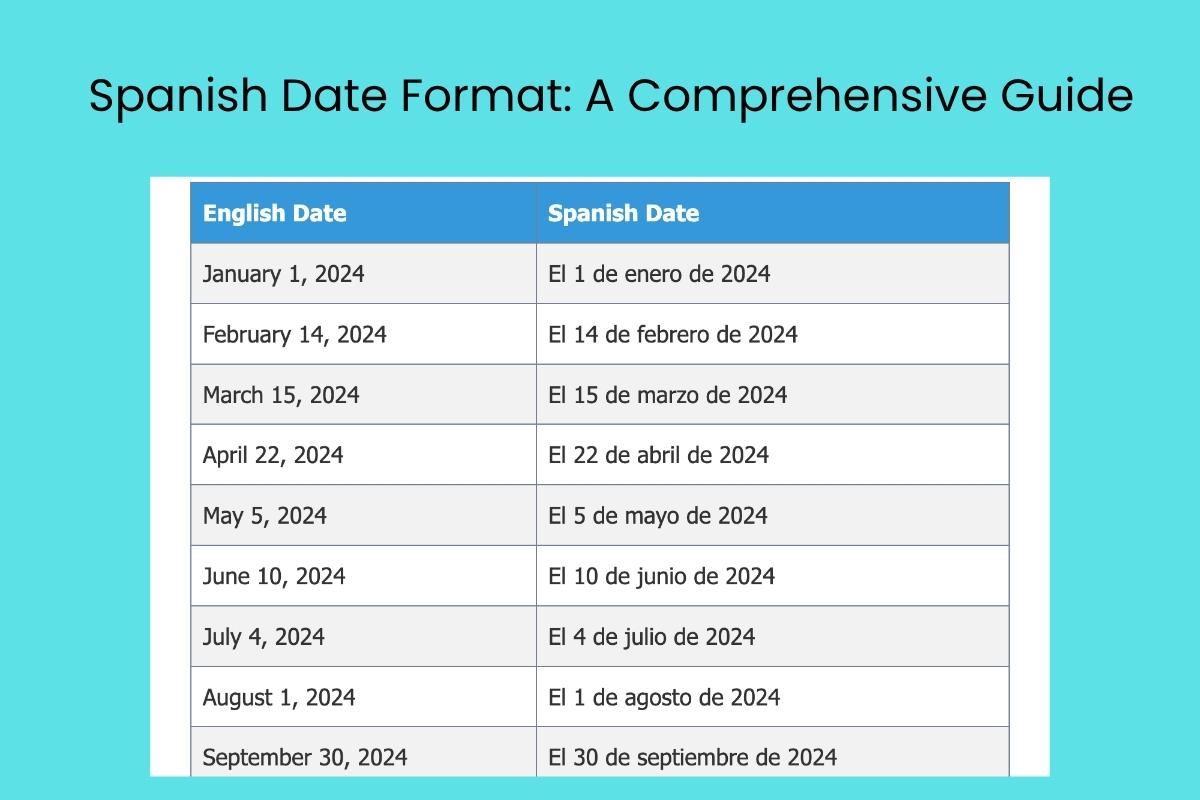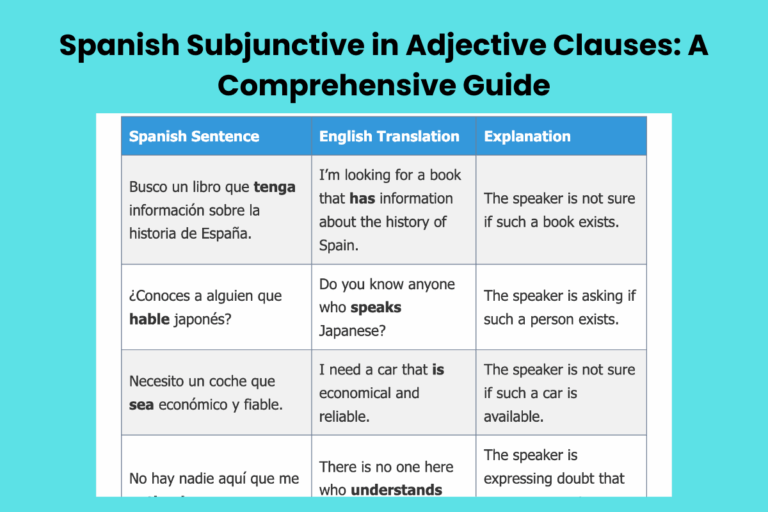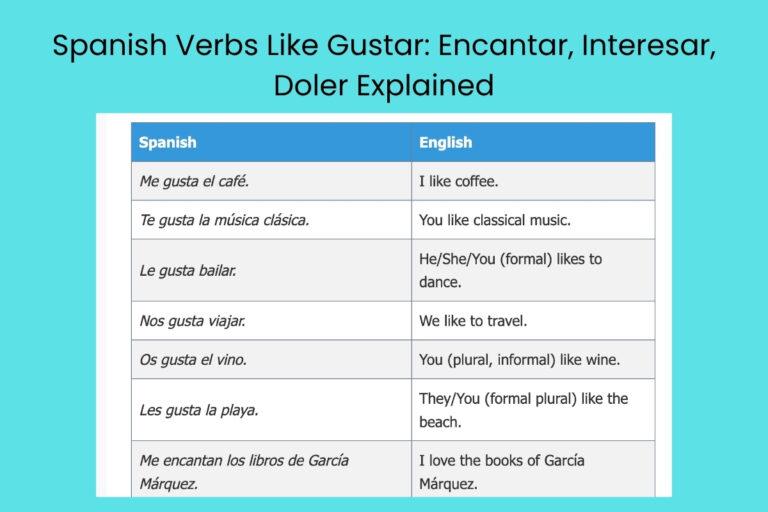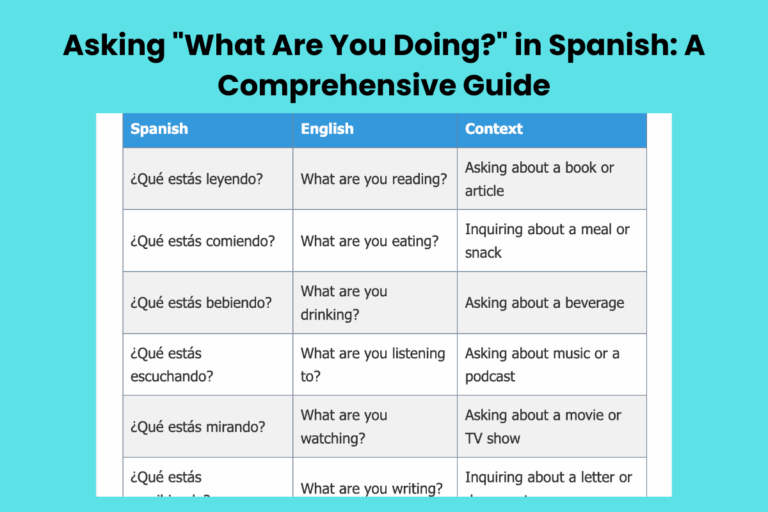Spanish Date Format: A Comprehensive Guide
Understanding how to write dates correctly is crucial for clear communication in any language. In Spanish, the date format differs significantly from the commonly used format in English-speaking countries.
Mastering the Spanish date format is essential for anyone learning Spanish, whether for travel, business, or academic purposes. This guide provides a detailed explanation of the Spanish date format, covering its structure, usage rules, common mistakes, and more.
This article is designed for Spanish learners of all levels, from beginners to advanced students, who wish to improve their understanding and accuracy in writing dates in Spanish.
Table of Contents
- Introduction
- Definition of Spanish Date Format
- Structural Breakdown
- Components of a Date
- Types of Dates
- Examples of Dates in Spanish
- Usage Rules for Writing Dates
- Common Mistakes
- Practice Exercises
- Advanced Topics
- Frequently Asked Questions (FAQ)
- Conclusion
Definition of Spanish Date Format
The Spanish date format typically follows the Day-Month-Year order, which is different from the Month-Day-Year format commonly used in the United States. In Spanish, dates are usually written with the day first, followed by the month, and then the year. This format is used in most Spanish-speaking countries and is considered the standard way to express dates. Understanding this format is crucial to avoid confusion and ensure clear communication.
The general structure of a date in Spanish is: el + Day de Month de Year. The preposition “de” connects the day to the month and the month to the year. The article “el” is used before the day, especially when speaking or writing the date in full. This structure is consistent across various contexts, including formal documents, casual conversations, and written correspondence.
Structural Breakdown
The Spanish date format can be broken down into three main components, each playing a vital role in constructing a complete and accurate date. These components are the day, the month, and the year.
Understanding each part and how they relate to each other is essential for mastering the Spanish date format.
Components of a Date
El Día (The Day)
The day is represented by a number from 1 to 31, indicating the specific day of the month. In Spanish, the day is placed first in the date format. For example, if you want to express the 5th day of a month, you would use the number 5. When writing the first day of the month, you often use the ordinal number “primero” instead of “uno.”
El Mes (The Month)
The month is represented by its name in Spanish. Unlike English, months in Spanish are not capitalized unless they begin a sentence or are part of a title. The names of the months are: enero (January), febrero (February), marzo (March), abril (April), mayo (May), junio (June), julio (July), agosto (August), septiembre (September), octubre (October), noviembre (November), and diciembre (December).
El Año (The Year)
The year is represented by a four-digit number. It is placed last in the Spanish date format, following the day and the month. For example, the year 2023 would be written as “2023.” Years are read digit by digit in Spanish, or in hundreds (for example, 1900 can be read as “mil novecientos”).
Types of Dates
While the basic structure of the Spanish date format remains consistent, there are variations in how dates can be written, depending on the context and level of formality. These variations include full dates and abbreviated dates.
Full Dates: Full dates include all the components: the day, month, and year, written out completely. This is the most formal and complete way to write a date in Spanish.
Abbreviated Dates: Abbreviated dates use numbers to represent the day, month, and year. This format is more common in informal contexts and can be seen in digital communication or quick notes. The day and month are separated by slashes or dashes, and the year is usually written with all four digits.
Examples of Dates in Spanish
To illustrate the Spanish date format, here are several examples. These examples cover a range of dates and formats, providing a comprehensive understanding of how to write dates in Spanish correctly.
Full Dates
Full dates are written with the day, month, and year fully spelled out. The preposition “de” is used to connect the components, and the article “el” precedes the day. The table below provides 30 examples of full dates in Spanish.
| English Date | Spanish Date |
|---|---|
| January 1, 2024 | El 1 de enero de 2024 |
| February 14, 2024 | El 14 de febrero de 2024 |
| March 15, 2024 | El 15 de marzo de 2024 |
| April 22, 2024 | El 22 de abril de 2024 |
| May 5, 2024 | El 5 de mayo de 2024 |
| June 10, 2024 | El 10 de junio de 2024 |
| July 4, 2024 | El 4 de julio de 2024 |
| August 1, 2024 | El 1 de agosto de 2024 |
| September 30, 2024 | El 30 de septiembre de 2024 |
| October 31, 2024 | El 31 de octubre de 2024 |
| November 2, 2024 | El 2 de noviembre de 2024 |
| December 25, 2024 | El 25 de diciembre de 2024 |
| January 1, 2023 | El 1 de enero de 2023 |
| February 28, 2023 | El 28 de febrero de 2023 |
| March 1, 2023 | El 1 de marzo de 2023 |
| April 10, 2023 | El 10 de abril de 2023 |
| May 20, 2023 | El 20 de mayo de 2023 |
| June 30, 2023 | El 30 de junio de 2023 |
| July 15, 2023 | El 15 de julio de 2023 |
| August 8, 2023 | El 8 de agosto de 2023 |
| September 12, 2023 | El 12 de septiembre de 2023 |
| October 1, 2023 | El 1 de octubre de 2023 |
| November 11, 2023 | El 11 de noviembre de 2023 |
| December 31, 2023 | El 31 de diciembre de 2023 |
| January 2, 2025 | El 2 de enero de 2025 |
| February 3, 2025 | El 3 de febrero de 2025 |
| March 4, 2025 | El 4 de marzo de 2025 |
| April 5, 2025 | El 5 de abril de 2025 |
| May 6, 2025 | El 6 de mayo de 2025 |
| June 7, 2025 | El 7 de junio de 2025 |
This table exemplifies how to correctly format full dates in Spanish, ensuring clarity and accuracy in formal writing.
Abbreviated Dates
Abbreviated dates use numbers to represent the day, month, and year. This format is more common in informal contexts.
The table below provides 30 examples of abbreviated dates in Spanish.
| English Date | Spanish Abbreviated Date |
|---|---|
| January 1, 2024 | 01/01/2024 |
| February 14, 2024 | 14/02/2024 |
| March 15, 2024 | 15/03/2024 |
| April 22, 2024 | 22/04/2024 |
| May 5, 2024 | 05/05/2024 |
| June 10, 2024 | 10/06/2024 |
| July 4, 2024 | 04/07/2024 |
| August 1, 2024 | 01/08/2024 |
| September 30, 2024 | 30/09/2024 |
| October 31, 2024 | 31/10/2024 |
| November 2, 2024 | 02/11/2024 |
| December 25, 2024 | 25/12/2024 |
| January 1, 2023 | 01/01/2023 |
| February 28, 2023 | 28/02/2023 |
| March 1, 2023 | 01/03/2023 |
| April 10, 2023 | 10/04/2023 |
| May 20, 2023 | 20/05/2023 |
| June 30, 2023 | 30/06/2023 |
| July 15, 2023 | 15/07/2023 |
| August 8, 2023 | 08/08/2023 |
| September 12, 2023 | 12/09/2023 |
| October 1, 2023 | 01/10/2023 |
| November 11, 2023 | 11/11/2023 |
| December 31, 2023 | 31/12/2023 |
| January 2, 2025 | 02/01/2025 |
| February 3, 2025 | 03/02/2025 |
| March 4, 2025 | 04/03/2025 |
| April 5, 2025 | 05/04/2025 |
| May 6, 2025 | 06/05/2025 |
| June 7, 2025 | 07/06/2025 |
This table shows how dates can be succinctly represented using numbers, maintaining the day-month-year order.
Ordinal Numbers for the First Day of the Month
When writing the first day of the month, it is common to use the ordinal number “primero” instead of “uno.” This usage adds a touch of formality and is often preferred in written Spanish. The table below provides examples of using ordinal numbers for the first day of the month.
| English Date | Spanish Date with Ordinal Number |
|---|---|
| January 1, 2024 | El primero de enero de 2024 |
| February 1, 2024 | El primero de febrero de 2024 |
| March 1, 2024 | El primero de marzo de 2024 |
| April 1, 2024 | El primero de abril de 2024 |
| May 1, 2024 | El primero de mayo de 2024 |
| June 1, 2024 | El primero de junio de 2024 |
| July 1, 2024 | El primero de julio de 2024 |
| August 1, 2024 | El primero de agosto de 2024 |
| September 1, 2024 | El primero de septiembre de 2024 |
| October 1, 2024 | El primero de octubre de 2024 |
| November 1, 2024 | El primero de noviembre de 2024 |
| December 1, 2024 | El primero de diciembre de 2024 |
| January 1, 2023 | El primero de enero de 2023 |
| February 1, 2023 | El primero de febrero de 2023 |
| March 1, 2023 | El primero de marzo de 2023 |
| April 1, 2023 | El primero de abril de 2023 |
| May 1, 2023 | El primero de mayo de 2023 |
| June 1, 2023 | El primero de junio de 2023 |
| July 1, 2023 | El primero de julio de 2023 |
| August 1, 2023 | El primero de agosto de 2023 |
| September 1, 2023 | El primero de septiembre de 2023 |
| October 1, 2023 | El primero de octubre de 2023 |
| November 1, 2023 | El primero de noviembre de 2023 |
| December 1, 2023 | El primero de diciembre de 2023 |
| January 1, 2025 | El primero de enero de 2025 |
| February 1, 2025 | El primero de febrero de 2025 |
| March 1, 2025 | El primero de marzo de 2025 |
| April 1, 2025 | El primero de abril de 2025 |
| May 1, 2025 | El primero de mayo de 2025 |
| June 1, 2025 | El primero de junio de 2025 |
Using “primero” adds a specific nuance to the date, indicating the first day of the month in a more formal manner.
Usage Rules for Writing Dates
Proper usage of the Spanish date format involves several rules related to prepositions, articles, capitalization, and punctuation. Adhering to these rules is essential for writing dates correctly and clearly.
Prepositions: “el” and “de”
The prepositions “el” and “de” are crucial in the Spanish date format. The article “el” is used before the day, and the preposition “de” connects the day to the month and the month to the year. For example: “El 5 de mayo de 2024.”
Definite Articles
The definite article “el” is used before the day when writing the full date. However, in some regions and contexts, it may be omitted, especially in informal writing.
For example, both “El 1 de enero” and “1 de enero” can be acceptable, but the former is more common.
Capitalization
Months in Spanish are not capitalized unless they begin a sentence or are part of a title. This is a key difference from English, where months are always capitalized. For example, “enero” (January) should be written in lowercase unless it starts a sentence.
Punctuation
In abbreviated dates, slashes (/) or dashes (-) are used to separate the day, month, and year. For example: “01/01/2024” or “01-01-2024.” It is important to maintain consistency in the chosen separator throughout a document or piece of writing.
Common Mistakes
Several common mistakes can occur when writing dates in Spanish, especially for those accustomed to the English date format. Being aware of these mistakes can help learners avoid errors and improve their accuracy.
Incorrect Order: One of the most common mistakes is using the Month-Day-Year order instead of the Day-Month-Year order. For example, writing “May 5, 2024” as “05/05/2024” is incorrect in Spanish.
Capitalizing Months: Capitalizing the names of months is another frequent mistake. Months in Spanish should be written in lowercase unless they start a sentence.
Omitting Prepositions: Forgetting to use the preposition “de” between the day, month, and year is also a common error. The correct format is “el 5 de mayo de 2024,” not “el 5 mayo 2024.”
Using Incorrect Articles: Not using the article “el” before the day, while sometimes acceptable, can sound less formal or incomplete. It’s generally safer to include “el” for clarity, especially in formal writing.
Here are some examples of common mistakes and their corrections:
| Incorrect | Correct |
|---|---|
| May 5, 2024 (written as in English) | El 5 de mayo de 2024 |
| 5/May/2024 | 05/05/2024 |
| El 5 Mayo de 2024 | El 5 de mayo de 2024 |
| el 5 de Mayo de 2024 | El 5 de mayo de 2024 |
| 5 de mayo, 2024 | El 5 de mayo de 2024 |
By understanding these common mistakes, learners can significantly improve their accuracy in writing dates in Spanish.
Practice Exercises
To reinforce your understanding of the Spanish date format, here are several practice exercises. These exercises cover translating dates, correcting errors, and writing dates in full.
Exercise 1: Translating Dates from English to Spanish
Translate the following dates from English to Spanish, using the full date format.
| English Date | Your Answer | Correct Answer |
|---|---|---|
| June 15, 2024 | El 15 de junio de 2024 | |
| July 20, 2023 | El 20 de julio de 2023 | |
| August 1, 2025 | El primero de agosto de 2025 | |
| September 3, 2024 | El 3 de septiembre de 2024 | |
| October 31, 2023 | El 31 de octubre de 2023 | |
| November 10, 2025 | El 10 de noviembre de 2025 | |
| December 25, 2024 | El 25 de diciembre de 2024 | |
| January 2, 2023 | El 2 de enero de 2023 | |
| February 14, 2025 | El 14 de febrero de 2025 | |
| March 8, 2024 | El 8 de marzo de 2024 |
Exercise 2: Correcting Incorrect Dates
Identify and correct the errors in the following Spanish dates.
| Incorrect Date | Your Correction | Corrected Date |
|---|---|---|
| 5/May/2024 | 05/05/2024 | |
| El 15 Mayo de 2023 | El 15 de mayo de 2023 | |
| 1 de January de 2025 | El primero de enero de 2025 | |
| Octubre 31, 2024 | El 31 de octubre de 2024 | |
| el 2 de Febrero de 2023 | El 2 de febrero de 2023 | |
| 30/09/23 | 30/09/2023 | |
| el 12 de augusto de 2024 | El 12 de agosto de 2024 | |
| 25 Diciembre 2023 | El 25 de diciembre de 2023 | |
| 10 de noviembre, 2025 | El 10 de noviembre de 2025 | |
| 4 de abril 24 | El 4 de abril de 2024 |
Exercise 3: Writing Dates in Full
Write the following abbreviated dates in full Spanish format.
| Abbreviated Date | Your Answer | Full Date |
|---|---|---|
| 01/01/2024 | El primero de enero de 2024 | |
| 14/02/2023 | El 14 de febrero de 2023 | |
| 15/03/2025 | El 15 de marzo de 2025 | |
| 22/04/2024 | El 22 de abril de 2024 | |
| 05/05/2023 | El 5 de mayo de 2023 | |
| 10/06/2025 | El 10 de junio de 2025 | |
| 04/07/2024 | El 4 de julio de 2024 | |
| 01/08/2023 | El primero de agosto de 2023 | |
| 30/09/2025 | El 30 de septiembre de 2025 | |
| 31/10/2024 | El 31 de octubre de 2024 |
These exercises will help you practice and solidify your understanding of the Spanish date format, improving your accuracy and fluency.
Advanced Topics
For advanced learners, there are additional nuances to consider when writing dates in Spanish, such as writing centuries and historical dates.
Writing Centuries
Centuries are often expressed using ordinal numbers. For example, the 20th century is written as “el siglo XX” (el siglo veinte). When referring to a specific year within a century, the full date format is used.
Example:
- “El siglo XXI” – The 21st century
- “El siglo XX” – The 20th century
Historical Dates
When writing historical dates, it’s important to maintain accuracy and use the appropriate format. Depending on the context, you may need to include additional information, such as the era or historical period.
Example:
- “El 12 de octubre de 1492” – October 12, 1492 (Columbus’ arrival in America)
Understanding these advanced topics can help you write dates in Spanish with greater precision and sophistication.
Frequently Asked Questions (FAQ)
Here are some frequently asked questions about the Spanish date format:
- What is the correct order for writing dates in Spanish?
The correct order is Day-Month-Year, with the preposition “de” connecting each element. For example: “El 5 de mayo de 2024.” - Do I need to capitalize the months in Spanish dates?
No, months in Spanish are not capitalized unless they begin a sentence or are part of a title. For example, “enero” (January) is written in lowercase. - Is it necessary to use “el” before the day in a Spanish date?
Yes, it is generally necessary, especially in formal writing. While it can be omitted in some informal contexts, including “el” is more common and clearer. - How do I write the first day of the month in Spanish?
You can use the ordinal number “primero” instead of “uno.” For example: “El primero de enero.” - What prepositions are used when writing dates in Spanish?
The preposition “de” is used to connect the day to the month and the month to the year. The article “el” precedes the day. - Can I use slashes or dashes to separate the day, month, and year in abbreviated dates?
Yes, you can use either slashes (/) or dashes (-). However, it’s important to maintain consistency in your chosen separator. - Is there a difference in date format between different Spanish-speaking countries?
While the basic Day-Month-Year format is consistent across most Spanish-speaking countries, there might be slight regional preferences in how dates are written or spoken. - How do I write centuries in Spanish?
Use ordinal numbers to express centuries. For example, “el siglo XX” (the 20th century). - What are some common mistakes to avoid when writing dates in Spanish?
Avoid using the Month-Day-Year order, capitalizing months, and omitting the preposition “de.” - How do I say “What is the date?” in Spanish?
You can ask “¿Cuál es la fecha?” to inquire about the date in Spanish. - How do I write “today’s date” in Spanish?
You can say “La fecha de hoy es…” followed by the date in the correct format. For example, “La fecha de hoy es el 15 de junio de 2024.” - Is it okay to abbreviate months when writing dates in Spanish?
While it’s possible in very informal contexts, it’s generally better to spell out the month in full for clarity, especially in formal writing.
Conclusion
Mastering the Spanish date format is crucial for effective communication in Spanish, whether in formal or informal settings. By understanding the Day-Month-Year order, the correct use of prepositions and articles, and common mistakes to avoid, learners can significantly improve their accuracy and fluency.
Remember to practice writing dates regularly and pay attention to the nuances of the language. With consistent effort, you can confidently and correctly write dates in Spanish.
Key takeaways include the importance of the correct order (Day-Month-Year), the use of “el” and “de,” and the non-capitalization of months. Use the practice exercises provided to reinforce your knowledge and continue to expand your understanding through real-world application.
Happy learning!







